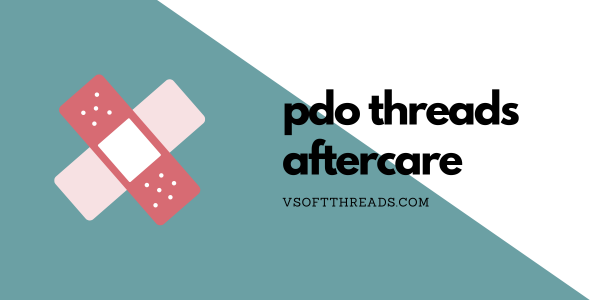
PDO threads can be used in a number of different ways to give your face and other parts of your body a healthy, youthful and glowing look, now and into the future. As dissolvable sutures, they are a non-invasive alternative to surgical options such as traditional facelifts or rhinoplasty procedures.
When done properly and with the best products, PDO threads are an excellent way to achieve the aesthetic look you wish to see in your face. And since there is no surgery required, the procedure doesn’t take long, doesn’t require general anesthesia and has little to no recovery time.
That being said, to achieve the optimal results from any PDO thread treatment, there are certain things you want to do after the treatment is completed. These steps will help you minimize soreness and swelling, and ensure that the effects of the treatment last as long as possible.
Below is a general PDO threads aftercare process that you should follow.
To achieve the optimal results from any PDO thread treatment, there are certain things you want to do after the treatment is completed. These steps will help you minimize soreness and swelling, and ensure that the effects of the treatment last as long as possible.
Table of Contents
Add a header to begin generating the table of contents
 Medically reviewed by: Elizabeth Williams RN
Medically reviewed by: Elizabeth Williams RN
Updated: 6/14/2024
Know What is Normal
While PDO thread lifts don’t require surgery, they are procedures to your face that will have some effects on your body. After all, these small dissolvable sutures will be inserted underneath your skin to lift certain parts of your face, for instance, and also stimulate the production of collagen.
Because of that, it is typical to expect some swelling to occur after the treatment has been completed. To counteract that, it’s a good idea to apply a cool compress in the first 24 hours following the procedure. Do this in 30-minute increments so that you don’t apply too much cold to the region.
In addition, it’s normal if you feel some soreness and tugging as the treated area is moved. For instance, if you had work done to your lip area, you may feel these sensations when you talk, eat and/or move your mouth in other ways. These feelings should diminish completely in about a week or so.
How to Treat Bruising
It’s also normal to expect some bruising after a PDO threads procedure. Again, this is because your body has been disturbed in some way, even if it is minor. The bruising is a normal bodily response to the threads being injected.
While the bruising usually dissipates in about one to two weeks after the procedure, there are some products you can use that will help it. Arnica is a good idea, as is bromelain.
Bromelain can also be used to treat swelling that hasn’t dissipated in the day after the treatment is completed.
What Not to Do
Following the procedure, it’s important not to lay down on your stomach or back for at least four hours. This will help to decrease the potential movement of the PDO threads. Along these same lines, try sleeping on your back for the next three to five days to prevent similar movement.
While you can return to your normal daily activities immediately following the procedure, it’s advisable to avoid exercise for the next four weeks. While you can walk, you don’t want to engage in strenuous workouts.
After 24 hours, you can return to your normal skin care routine, which includes washing your face gently. Within the first 24 hours, don’t wash your hair or take a shower, and don’t take a hot shower, or go in a sauna or hot tub, for a week.
It’s also best to avoid drinking alcohol or smoking for one to two weeks following a PDO threads procedure. Engaging in these activities can actually slow the healing process down.
Finally, make sure that you don’t massage the area that was treated or receive a deep facial massage for two months following the procedure. Doing either of those things could compromise the PDO threads’ placement and, as a result, the outcome of the procedure.
Find a Provider That Uses V Soft Lift PDO Threads
Following the PDO threads aftercare steps above will help you minimize bruising and swelling while maximizing integrity and results following any PDO threads procedure. If you are feeling anything that you would consider out of the ordinary — such as extreme bruising or swelling, or a lot of pain — make sure to immediately contact your practitioner for further medical instructions.
In addition to these PDO threads aftercare steps, it’s important to choose a trusted medical practitioner that uses only the best PDO threads on the market. Those are produced by V Soft Lift, one of the world’s leading producers of PDO threads.
We offer a wide variety of PDO threads, each of which can be used in a customizable way for each individual, so that the procedure and results are tailored to their liking and their body.
For more information, please contact us today.
